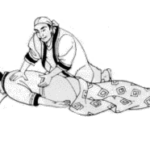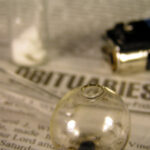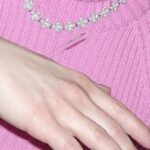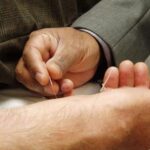Traditional Chinese Medicine, or TCM, is perhaps the longest surviving medical tradition in the world; this thousands-years old, multifaceted practice yet serves many people living in the most populous nation and all over the world. While herbal medicine and acupuncture are among the more widely known forms of treatment in the United States it is a testament to the importance of massage in Eastern thought that in the oldest surviving book of Chinese medicine, the Huang Ti Nei Ching, massage was accorded a place alongside those methods mentioned as a popular folk remedy. The modern Japanese massage technique shiatsu is a worthy heir of the monolithic Chinese tradition as well as a unique branch of the general massage field.
The technique of “finger pressure” (shiatsu ・指圧) originated with Tokujiro Namikoshi in the early 1900’s, who at the age of seven began developing the massage technique by trial and error through the attempted treatment of his arthritic mother. As the name implies, the basics of Shiatsu are squarely concerned with the use of the fingers and palm, though Shiatsu would eventually come to embrace employment of the masseur’s legs, arms, and bodyweight as tools of treatment. Through Tokujiro’s efforts Shiatsu was established in 1940 at his own school, the Japan Shiatsu College, and in 1957 Shiatsu was recognized by the Japanese government as a distinct form of therapy.
The basic mechanics of Shiatsu are deceptively straightforward: in place of complex hand movements common to Western massage techniques Tokujiro’s method calls for simply placing a hand, knee, etc. on a certain area of the patient’s body and applying little or much of one’s body weight as the occasion calls for. The subtler aspects of the practice, or at least the underlying philosophy, however, are decidedly more difficult for the outsider to grasp. As is common across Eastern medical traditions the concept of ki (the Japanese term for the Chinese chi) remains paramount: the idea of a life-breath, a spirit, in each of us that may be damaged and healed and damage and heal the body in turn dictates philosophies of attuning the entire self to a healthy state as well as an ongoing communication between the ki of the masseur and massaged person. A damaged spirit will manifest itself as a physical ailment, and vice-versa, calling for the Shiatsu practitioner to massage with the goal of realigning the flow of ki throughout the body as well as assauging what physical ailments s/he may. Of equal importance is the verbal and non-verbal communication of the Shiatsu masseur and the patient, which is considered a vital part of the healing and supporting process in both parties. Shiatsu is regarded by its adherents as less of a medical treatment then as a two-way holistic treatment of mind and body.
Shiatsu is a widely popular practice in Asia and throughout the world as it wins supporters through its simple yet spiritually uplifting massage techniques. While the nature of massage ultimately places some limit on its treating potential Shiatsu suggests a method of cultivating overall physical well-being through the realignment of one’s spirit; this practice, as well as other forms of Eastern medicine, recommends itself as a physical and spiritual treatment to complement medicinal traditions in Asia and throughout the world.
Works Cited
“About Shiatsu.” Shiatsu Society. 2006. 26 September 2006
“Shiatsu.” Wikipedia: The Free Encyclopedia. 20 September 2006. 26 September 2006





